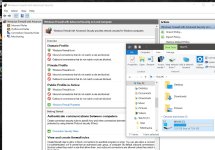5
509322
When big releases are meant to happen they have to pass the iso early to the manufacturers so it makes sense to make an iso. Usually, they don't provide an actual iso and you have to go through hoops(esd) but i guess after their fail releasing the agent and the actual links by accident they though it's a good idea to give the iso to insiders as a release preview. MS is weird but what can you do. At least they made it easier this time.
The Creator's Update ISOs were mistakenly leaked by MS, people got the ISOs, MS took down the ISOs, then MS put the ISOs back up the next day. People that got the ISOs made download links.
Windows Defender on Creator's Update:
Memory usage goes even higher into the 600 - 700s of MBs, scans take a long time even on an SSD = 1 hr for Full System scan
The scan will completely finish, but ASE will continue to peg CPU at around 20 % and RAM at around 600 MB until system is rebooted
So it appears Creator's Update introduces more Windows Defender bugs than what is already there
Last edited by a moderator:

